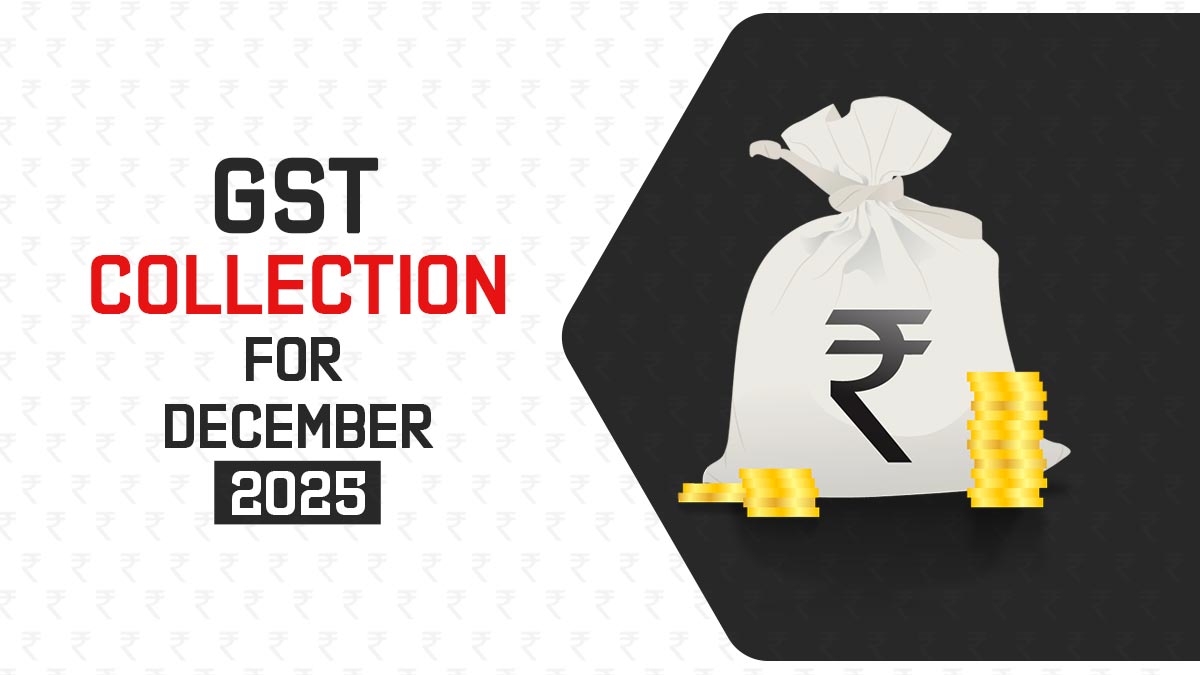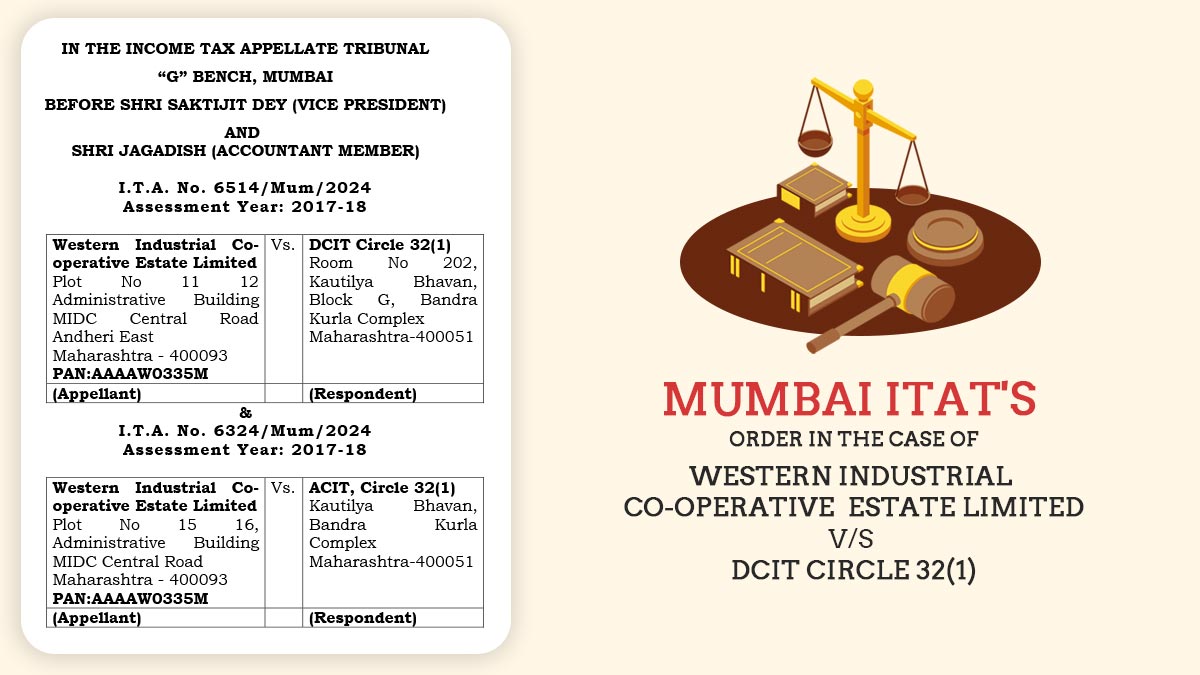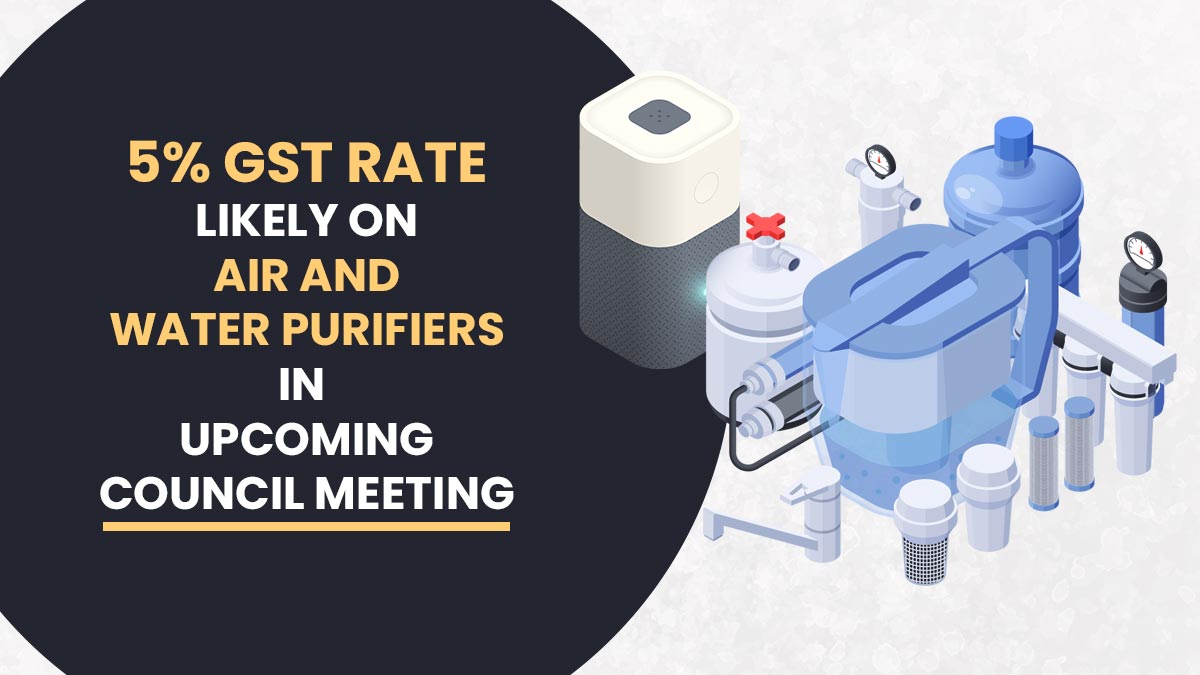
When comparing the data shown in GSTR 9/9C Vs GSTR 3B, the council has initiated issuing the notices and has urged for the data. This blog acknowledging different changes in the GST law has the objective of furnishing clarity on the filing of the annual returns (Form GSTR 9) and the reconciliation statement (Form GSTR 9C) as well as with needed reconciliations, best practices, advanced issues & solutions, and recommendations as applied for FY 2022-23.
31st December 2023 is the last date. The last date is not anticipated to be extended this year. (previous year no extension either).
Disclosure Needs Revisions
Annual Return Form GSTR 9 Tabel Amendments
- Table 4 – Amendments, credit notes, and debit notes cannot be shown as net figures in B2B, B2C, etc. now. Tables 4I to 4L are to be shown separately from FY 21-22
- Table 5 – Exempted & Nil-rated could be consolidated in the ‘Exempted’ column or displayed separately. Table 5F – Non-GST is to be displayed separately from FY 21-22 onwards
- Table 17 – HSN outward information mandated from FY 2021-22 onwards. (GSTR 1 consolidated data can be used for table 17)
- HSN disclosures to be functioned at 6-digit level (when T/o > Rs. 5 crore) and 4-digit level (when T/o < Rs. 5 crore for B2B only)
- Clarification that disclosures in GSTR 1 tables 9A, 9B & 9C should be represented in tables 10 & 11 of GSTR 9.
The retained relaxations from the past are stated as
- Table 5 – Amendments, credit notes, and debit notes can be displayed as net figures in Table 5.
- Table 6 – No need for the ITC bifurcation into ‘inputs’/’input services’, total value could get consolidated under ‘Inputs’. From FY 2019-20 – under ‘Inputs’ & ‘Capital Goods’.
- Table 6 – Might consolidate ITC beneath RCM from registered and unregistered individuals beneath the table of registered persons.
- Table 7 – Under Table 7H, all the ITC reversals might get consolidated but TRAN reversals are represented separately.
- Part V – Reversal/claim of ITC in the earlier year might not be filled (T12 & T13)
- Tables 15, 16 & 18 – Refund details, Info on inward supplies & deemed supply, and HSN inward information remain optional.
ITC Reporting in GSTR-9 Annual Return Form
Acknowledging the revisions in ITC reporting beneath GSTR-3B, in which the ITC is claimed in Table
4.A.5 and then reversed under Table 4.B.1 or 4.B.2 can get directed to the wrong disclosure in Table 6B of GSTR 9. The same shall directed to false reconciliations in Table 8 when corresponding with GSTR 2A form. Through the way of an illustration below, it has been demonstrated-
Assume data under GSTR 3B for FY 2022-23 as follows:
- Table 4.A.5 – IGST – Rs. 1 Lakh; CGST/SGST – Rs. 2 Lakh each
- Table 4.B.1 – IGST – Rs. 0.15 Lakh; CGST/SGST – Rs. 0.30 Lakh each
- Table 4.B.2 – IGST – Rs. 0.20 Lakh; CGST/SGST – Rs. 0.50 Lakh each
Net Input Tax Credit as per Table No.4C, CGST/SGST INR 1,20,000, IGST INR 65,000
Table No. Particulars Integrated Tax Central Tax State/ UT Tax 6A Inward supplies (excluding imports and inward supplies obligated to reverse charge but consist of the services obtained from SEZs) 1,00,000 2,00,000 2,00,000 6B Inward supplies (excluding imports andinward supplies obligated to reverse charge but consist of the services obtained from SEZs) 65,000 1,20,000 1,20,000 6M Any additional ITC claimed however not cited above [ITC reversals 4.B.1 & 4.B.2 claimed and reversed – total] 35,000 80,000 80,000 6O Total ITC claimed 1,00,000 2,00,000 2,00,000 7C Reversal as per Rule 42 [from 4.B.1] 10,000 20,000 20,000 7D As per Section 17(5) [from 4.B.1] 5,000 10,000 10,000 7H Other Reversal [from 4.B.2] 20,000 50,000 50,000 7J Net ITC available for utilization 65,000 1,20,000 1,20,000 8A As per GSTR 2A (minimum assumed) 1,00,000 2,00,000 2,00,000 8B Inward supplies (excluding imports and inward supplies obligated to reverse charge but comprises of the services obtained via SEZs) 65,000 1,20,000 1,20,000 8D Difference 35,000 80,000 80,000 8E ITC is available but not availed 20,000 50,000 50,000 8F ITC is available but ineligible 15,000 30,000 30,000
Note: In which the GSTR 2A figures are more compared to the values as per table 6A- the differential balance might be deemed in table 8E/8F (lower value might show the credit notes asked via the vendors however the receiver does not accept it)
Note: From October 2022 the law has revised vide Finance Act 2022 to acknowledge GSTR 2B for reconciliation purposes but according to Section 16(2)(aa) GSTR 2B reconciliations practically initiated on the GST portal from January 2022 onwards. The same may cause some problems in ITC reconciliations for FY 2022-23.
Critical Details in GST Annual Return Forms
- The taxpayer is not required to file the annual return in form GSTR-9/9A for FY 2022-23 if their aggregate annual turnover is up to Rs. 2 crores. (If 9 is not filed, 9C is not needed)
- The assessee who has a turnover exceeding Rs 5 cr is needed to file GSTR 9C. Hence those individuals between Rs 2 crore & Rs. 5 crore need not file Form GSTR 9C but need to file GSTR 9.
- According to Table 4, the liability (incl. Adjustments in tables 10 & 11) should be deemed as a final obligation (under the books) whatever the liability is shown in GSTR 3B + Form DRC-03 during the FY.
- Time duration for the transactions of the former year shown in the subsequent fiscal year till the stated duration directed to the information shown for FY 2022-23 up to 30th November 2023. considering the extension of timelines vide NN 18/2022-CT.
- The reconciliation of discrepancies in Table 6J of GSTR 9 could prompt a departmental dispute. It’s imperative to ensure that there is a comprehensive reconciliation at the invoice level, with Table 7J aligning with the ITC claimed in GSTR 3B.
- Payments should be processed using Form DRC-03. Although the use of ITC as per the CGST Rules is limited, this limitation can be contested based on the interpretation stemming from section 49(4) in conjunction with Rule 86(2). Moreover, the GST portal currently allows such utilization of ITC.
- While GSTR 9 Table 8 continues to consider GSTR 2A, the recent change in the CGST Rules now favours the use of GSTR 2B for ITC reconciliation. Taxpayers can voice concerns on the GST portal if substantial disparities exist between GSTR 2A and 2B.
- Since the verification of ITC claims and credit matching now occurs through GSTR 2B versus GSTR 3B via Form DRC-01C, any notifications based on the Table 8 disclosure in GSTR 9 might no longer hold relevance or appropriateness.
GSTR-9 C Reconciliation Statement Form
- Table 5B – Turnover reconciliation – Unbilled Revenue at the start of the year can be integrated and disclosed in Table 5O.
- Other Turnover reconciliations from Table 5C to 5N – are to be shown separately and cannot be clubbed under Table 5O. Before that the relaxation was available till FY 2021-22 as a single disclosure in Table 5O.
- Table 12B & 12C – No more optional, obligated to show the same ITC details.
- The new rate of 6% (3% CGST & 3% SGST) comprises in respective tables (applicable for Brick Manufacturing)
- Table 14 – Remains optional to fill the expense-wise Input tax credit claim information (the same might be available from the disclosure in clause 44 of Tax Audit Form 3CD).
Note-1: Pre-requirement to 9&9C – all GSTR 1 & GSTR 3B for FY 2022-23 should get filed Note-2: Form GSTR 9 & GSTR 9C – once filed could not get amended. (recommended to file together)
GST Reconciliations Needed
- Turnover – Audited Financial Statements (AFS/Books) vs Table 5A (consider all GSTINs)
- Table 5N Vs Table 17 – As Table 17 is now compulsory, such reconciliation can be an internal check procedure.
- Outward taxes – Liability according to the Books Vs Liability as per GSTR 3B + DRC-03 (if any) [assure RCM (Reverse Charge Mechanism) liability is included]
- Outward taxes – Rate-wise obligation as per workings vs. rate-wise Liability as per books
- GSTR 1 Vs GSTR 3B (The same shall assist in updating GSTR 9 easily)
- Inward taxes – Credit as per books vs. credit as per GSTR 3B to find out the excess claim of ITC, if any and missed out ITC to claim before 30th November 2023 via October 3B returns.
- Closing balance [Cash + Credit] – Books Vs GST portal (consider all GSTINs)
- Valide and furnish for Spill transactions of the previous FY and keep the tracker for the next FY
- Find out the rectification and amendment implemented beyond the 30th November timeline. (Revised from 20th September).
Note- Execute invoice-level reconciliations: An advantageous practice to taxpayers that assists not solely in the filing process of the annual returns but also in finding out the errors and furnishing the data to the department in the forthcoming time.
Best Techniques and Advice
- Maintain 9 and 9C workings with links to all the pertinent information. Prevent keyed-in workings.
- Hold separate information of ITC claimed, reversed, and re-claimed if the assessee attains the conditions stated under section 16.
- For the case of revisions, the outward register is to be maintained with original values, so that the same shall be assistive while tables 4 & 5 of GSTR 9.
- Invoice level GSTR 2B Vs ITC as per books reconciliation is to be performed for Table 8 disclosure in GSTR-9.
- Credits according to the books – unclaimed because of non-matching with GSTR 2A/2B. Pass as expense in books of accounts for the Financial year 2022-23 and validate the recovery option from continuing vendors.
- Furnishing the “Annual GST – Management Report” which might comprise of the following:
- Folder with final workings and filed Form GSTR 1, 3B, GSTR 9 & 9C for the FY.
- Reconciliations for the FY – Outward, Inward & RCM – bird’s eye view
- Causes for variances and action opted (summarily)
- Where additional obligation was noticed – summary information + payment documentation
- Recommendations for the internal accounting/processes/reporting going forward
Advanced Problems and Proper Solutions
- Liability of the former year paid in the current year: It is to be shown in Table 10 of the earlier year GSTR 9. In the present year, GSTR 9 the same must not be shown again, and the reason for the variance in the tax liable to get vs paid in table 9 in the present year should be kept for the coming generation.
- Credit Note disclosures: There is confusion in the wording in table 4 of the GSTR 9 this is due to the heading transactions for the year on the other side CN asked for the invoices aforesaid directed to the interpretation while CNs asked in the subsequent fiscal year (in the state duration) can be acknowledged. CNs asked for the subsequent fiscal years should be shown in the same duration since the same does not include the transactions of the former fiscal year as per our opinion.
- Table 6M utility: Tables 6B & 6H are deemed for auto-populating data in Table 8 for GSTR 2A reconciliation. The same might comprise the ITC of the tax durations concerning the past period. Hence, table 6B could acknowledge information for the year only and Table 8 reconciliations. Moreover acknowledging the new ITC disclosure format, table 6M can be utilized to show the availed ITC and therefore reversed as a permanent or temporary reversal.
- Handling Delayed ITC ledgers: Post limitation on ITC claim on the foundation of GSTR 2B reflection, various eligible ITC might not have availed and kept in deferred ledgers. In Table 13 of GSTR 9 disclosures for the same should be acknowledged to the extent claimed in the duration of 1st Apr to 30th November 23. In GSTR 9C – Table 12A to include the whole ITC as per books, table 12C can be matched with GSTR 9 table 13 figures. Likewise, the additional disclosures in the subsequent financial year would be in Table 6B/6M of GSTR 9, and Table 12B of GSTR 9C.
- Table 8C Vs Table 13 in GSTR 9: The reasons for the differences are- Table 13 comprises the Input tax credit on the imports and inward supplies obligated to reverse charge that should not be shown in 8C. Indeed the goods or services in the transit required to be shown in Table 8C but not in Table 13. (those invoiced before, but goods/services obtained in subsequent tax duration).
- Table 8D analysis: Where GSTR 2A/2B is lower compared to the ITC claimed in GSTR 3B the problems might emerge. GSTR 2A/2B matching has been made obligatory from January 2022. The taxpayers need to confirm that the ITC claimed is as per the valid tax invoice, eligibility conditions, and reflection in the GSTR 2B proceeding forward.
- Table 8K analysis: ITC expired does not imply that the same ITC shall get diminished from the electronic credit ledger. The same is just an indication to the department for the extent of the ITC available on the taxpayer record but did not claim.
- Negative ITC in Table 4C of GSTR 3B: The negative ITC (indicating tax liability) in Table 4C of Form GSTR 3B will confirm in table 9-GSTR 9 that such amount is deemed in tax filed but these values shall not shown automatically and hence, it might require to get added in table 7H and also in table 9 (tax payable) to assure reconciliation. This even impacts identical disclosures in Table 9 of GSTR 9C.
- Table 7E vs Table 9 of GSTR 9C: But the same does not a mandated reconciliation the same checks assure that the taxable value according to the books (rate wise) matches the taxable value as reconciled in the former tables. Assure that table 9 of GSTR 9C is filled according to the books whatever the disclosure in GSTR 3B or GSTR 9 is.
- Calculation of interest: Post five years we have received clarity on the interest applicability that applies to the late tax liability payment w.e.f. 1st July 2017, that is,
- Output liability – at the rate of 18% per annum- For the obligation of the month is displayed in the month – net liability, if not gross liability irrespective of ITC balance availability (disputable view)
- RCM liability – at the rate of 18% per annum – Always gross basis as expected in cash.
- ITC – at the rate of 18% per annum- Just when ITC ‘incorrectly claimed and used’ more than the balance remains in the electronic credit ledger. In which the IGST ITC is erroneously claimed and used, the balance in the ledger should acknowledged as IGST + CGST + SGST ledger balances.
- Note, in GST no interest on interest is there. Once taxes are released interest freezes.
Update Release by GSTN Department
On the date 31st August 2023, an advisory by the GSTN was issued on the introduction of an Electronic Credit and Re-claimed Statement in which the ITC has been claimed in the GSTR 3B table.
4.A.5 and temporarily reversed under table 4.B.2 and is to be reclaimed in which the same fulfils the ITC re-claim criteria (refer NN 14/2022-CT dtd 05/07/2022).
Behind the same reporting, the logic is to ensure that the ITC that was availed and temporarily reversed under 4.B.2 and after that re-claimed under table 4.A.5 and also shown in table 4.D.1, is claimed merely to the extent as earlier reversed.
The assessee shall enabled to upload the same information up to 30th November 2023 – 3 revisions and fresh reporting options will be furnished, after which up to 30th December 2023 only amendment options will be available.
Note: On the GST portal reporting utility shall be available while doing login or under the services tab. The GST portal automatically takes the information from August 2023 GSTR 3B onwards, therefore, data up to July 2023 is to be uploaded in this statement.
Disclosure recommendations- In Form GSTR 9C – Table 12C – “ITC booked in the existing fiscal year to be availed in next fiscal years”, which should display ITC as per books but not yet credited to the ITC ledger on the GST portal. The main difference that might emerge when compared with GSTR 9 comprises of such ITC which is re-claimable that might be informed via table 13 of GSTR 9C.
Closure: The filing Form GSTR 9 & 9C activity has been more critical since the same is anticipated to display the final values (with corrections if any) for the fiscal year. For scrutiny, the council is indeed utilizing the same as a document. Hence, Placing the procedures to confirm the precise information and essential reporting.









